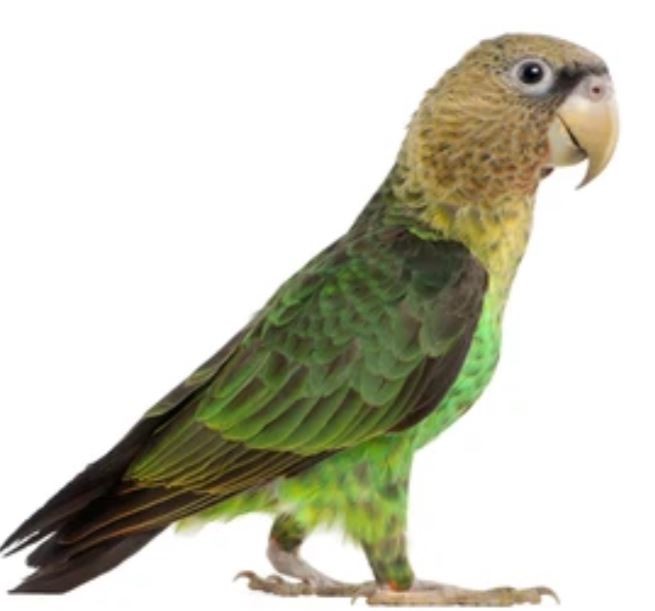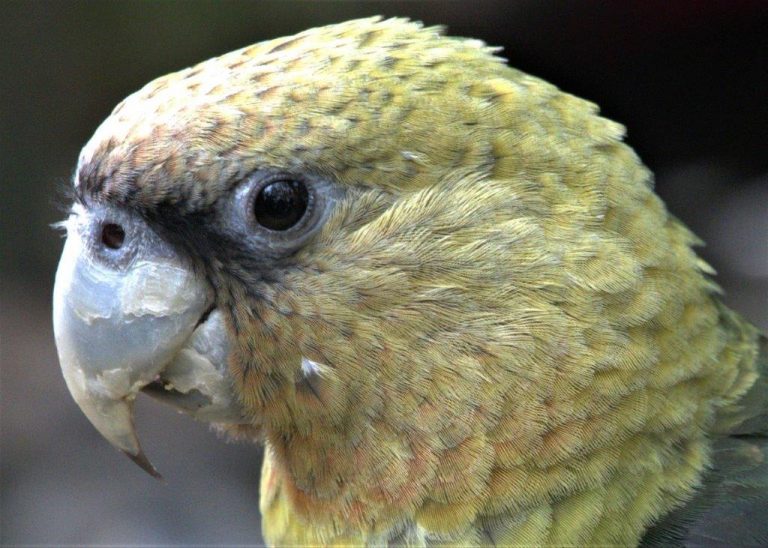A gift of rare Cape parrots has made Birds of Eden possibly the only place where you can be almost guaranteed a sighting of this true South African species.


Birds of Eden has received a donation of fifteen Cape parrots which have been successfully released into the indigenous yellowwood forest in the world’s largest free-flight aviary.
According to curator Isabel Wentzel, the birds came from a private collector who has an interest in African parrots.
“At first he offered them to us for sale, but we refuse to fuel the trade in parrots, so we don’t ever buy them,” she said.
Instead, wanting the best for his pets, the collector donated them to the sanctuary, where they’ve joined more than 4,000 birds from more than 220 species that now live in the 2.3 hectare, 55 metre high dome that spans a natural gorge in The Crags, outside Plettenberg Bay.
Birds of Eden is one of four members of the South African Animal Sanctuaries Alliance (SAASA), along with Monkeyland Primate Sanctuary and Jukani Wildlife Sanctuary – both also in The Crags – and Monkeyland-KZN in Ballito in KwaZulu-Natal.
NEW SPECIES
Depending on which source you read, the number of Cape parrots in the wild is estimated at between 700 and 1,800 individuals, with habitat loss, disease, illegal capture for the pet trade, and persecution by fruit farmers being the main factors limiting population growth.
The only species of parrot endemic to South Africa, it prefers the high altitude, mist-belt forests of the country’s eastern mountains – from around Hogsback in the Amathole Mountains of the Eastern Cape and northwards into Limpopo Province – although it does visit other habitats, including coastal forests, when searching for food. Its large, strong bill enables it to feed on the kernels of the fruits of yellowwood (which it favours), as well as white stinkwood and wild plum trees, amongst others.
Cape parrots nest in natural hollows in tall trees – particularly yellowwoods – and breed only every second year. They tend to move around in groups of about ten individuals each, with the groups often incorporating adults and their young: although the chicks fledge at between 55 and 79 days, they continue to be fed by both parents for some time afterwards.
Research published in 2015 showed that the Cape parrot is genetically distinct – by quite a large margin – from all of its closest relatives, and it is therefore now considered a separate species (Poicephalus robustus robustus), rather than a subgroup of either of the savannah-dwelling forms: the brown-necked parrot, P. r. fuscicollis, or grey-headed parrot. P. r. suahelicus.
The researchers found that the three exhibited completely separate genetic clusters, and that there has been no recent exchange of genes between them.
Elevating Cape parrots to the status of separate species is significant for their conservation, and means that they can be assessed for the IUCN Red List – where they were listed as Vulnerable in 2020.
EASY SIGHTINGS
Isabel said that the Cape parrots introduced to Birds of Eden have begun exhibiting natural behaviour patterns.
“They’ve divided themselves up into three different groups, which have established themselves in different sections of the forest, and they seem to favour cooler areas within the sanctuary, like the ones where we’ve installed mist sprayers, or where the shade is thickest.”
The Cape parrot’s rarity and its cryptic coloration – green with a yellow-grey head and with orange markings on the head, shoulders, and leg feathers that are more pronounced in the females than the males – makes them difficult to see in the wild.
Like many other members of the genus Poicephalus, its size, playfulness, and peaceful personality has made the Cape parrot a popular subject for the pet trade – and, since the Birds of Eden flock are already habituated to humans, Isabel explained that it isn’t surprising that they make themselves quite conspicuous when people visit the sanctuary.
“They tend to fly overhead of you and ahead of you as you walk along the pathways, so you can almost be guaranteed a sighting.
“This is significant, because it personalises the experience, and helps underscore the importance of Cape parrot conservation,” she said.
The South African National Biodiversity Institute (SANBI) recognises the Cape parrot as a “flagship species for South African biodiversity. It is the only parrot species endemic to the country and it would be a major loss for our biodiversity if this parrot species goes extinct.”
“The presence of Cape parrots at Birds of Eden is a major educational opportunity, and we’re currently discussing the erection of a signboard in our reception area about their conservation with the Cape Parrot Project of the Wild Bird Trust,” said SAASA marketing director, Lara Mostert.
Additionally, although tours at Birds of Eden are usually self-guided, she said that members of staff are on hand to point the species out to guests who request this.
“We’re delighted to have them here, proud to help with their conservation, and excited that they’ve come ‘home’ to our portion of the Knysna and Tsitsikamma forests – which they must have inhabited in earlier times, since they’re known in Afrikaans as the Knysna papegaai (Knysna parrot),” she said.
RESOURCES: